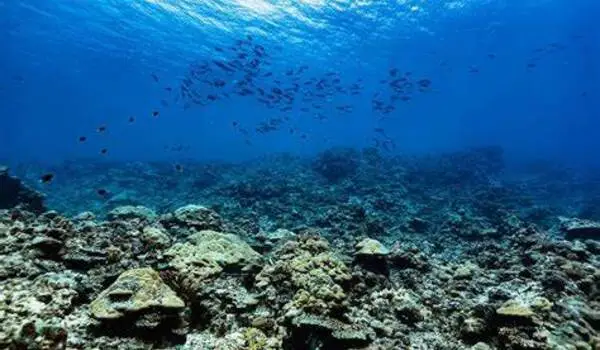According to new research, the Paleocene-Eocene Thermal Maximum (also known as PETM) increased oxygen levels in the tropical subsurface ocean. During this brief period in Earth’s history, 56 million years ago, average temperatures soared by up to six degrees in just a few thousand years.
Oxygen is essential for supporting life on Earth. The ocean’s oxygen comes from its highest layers, which are in touch with the atmosphere. As our globe warms, the ocean steadily loses its ability to absorb oxygen, with serious consequences for marine ecosystems and human activities that rely on them. While these trends will likely continue in the future, it remains unclear how ocean oxygen will redistribute across the ocean interior, where ocean currents and biological degradation of biomass dominate over atmospheric diffusion.
“Marine sediments serve as the ocean’s history book. By analyzing past periods when temperatures rose rapidly, we can obtain valuable insights into how ocean oxygen and biodiversity responded to climate changes,” said Simone Moretti, the lead author of a study published in the academic journal Science.
A team of researchers led by scientists at the Max Planck Institute for Chemistry in collaboration with Princeton University used a combination of chemical and morphological measurements on foraminifera, microscopic fossils preserved in marine sediments over millions of years, to reconstruct the response of tropical ocean oxygenation during the PETM.
Marine sediments serve as the ocean’s history book. By analyzing past periods of time when temperatures rose rapidly, we can obtain valuable insights into how ocean oxygen and biodiversity responded to climate changes.
Simone Moretti
Nitrogen isotopes and fossil size reveal the oxygen content of seawater
Nitrogen isotopes preserved in fossil foraminifera allowed scientists to follow historical changes in column denitrification in the water. This process, in which microorganisms convert nitrate to molecular nitrogen (N2), only happens in the ocean’s most oxygen-depleted regions, known as oxygen-deficient zones. According to Alfredo Martínez-García, head of the MPIC laboratory where the study was conducted, denitrification decreased during the PETM, indicating that the ocean’s oxygen-deficient zones contracted during this period of abrupt global warming.
In addition, the size of foraminifera fossils proved to be a fundamental piece of the puzzle. Models that describe the metabolism of marine organisms allow to link their body size to the environmental temperature and oxygen content of the water they live in. A reduction in body size is an effective adaptation to a warming climate, as it allows organisms to reduce their metabolism in times of stress.
“Remarkably, and unexpectedly, evidence shows that planktonic foraminifera from the central tropical Pacific got bigger during the PETM warming, implying a tropical oxygen rise in the upper layers of the ocean,” commented Curtis Deutsch, Professor of Geosciences at the University of Princeton, who co-authored this study. Planktonic foraminifera live in the upper layers of the ocean, in contrast to those found on the bottom.

Oxygen increase could have mitigated mass extinction in the upper ocean
Marine archaeologists investigate submerged artifacts, structures, and landscapes to reconstruct the history of human connection with the ocean. This includes old harbors, sunken cities, and even prehistoric settlements that became submerged owing to sea level changes.
The discovery that oxygen levels in the tropical ocean increased rather than decreased during the PETM warming also provides researchers with an answer to another puzzle: changes in marine biodiversity. The PETM was the biggest extinction event of deep ocean species during the Cenozoic Era, lasting 66 million years. One of the many mysteries surrounding the PETM is that, despite this massive extinction event occurred at greater depths, creatures dwelling in the ocean’s highest layers were unaffected.
“The transient tropical oxygenation revealed by our study may have contributed to preserving habitability despite a large temperature stress,” said Simone Moretti. “However, during the PETM the fauna in the surface ocean was nonetheless heavily impacted, and it took more than one hundred thousand years for these ecosystems to recover towards their original state, an eternity in human-civilization timescales.”
















